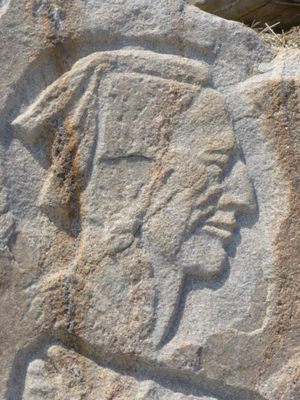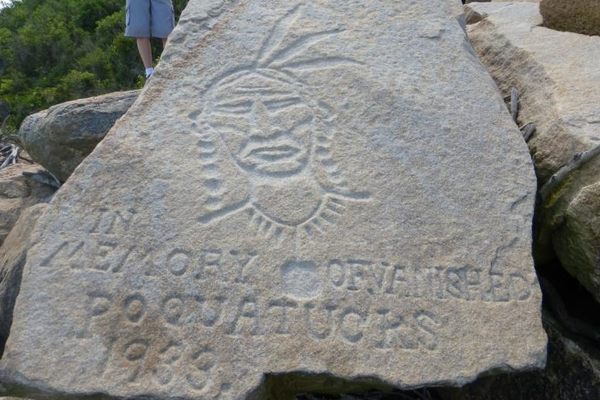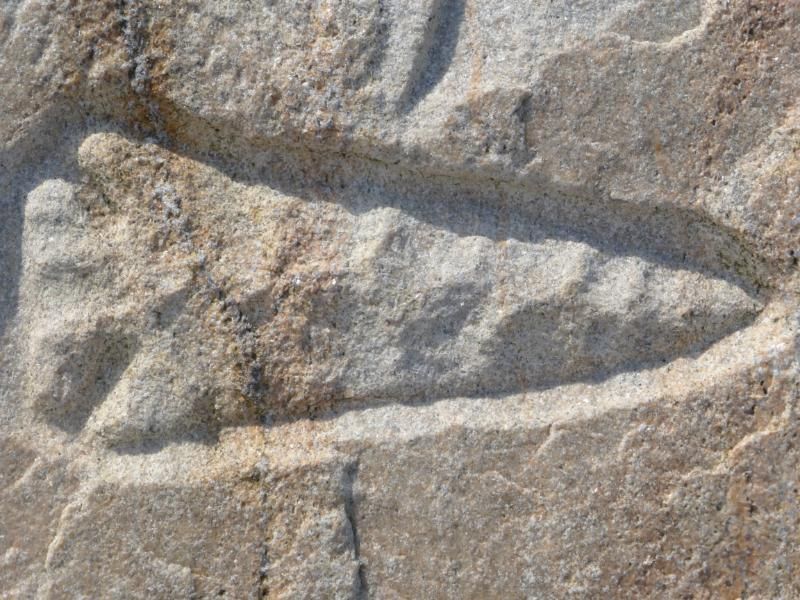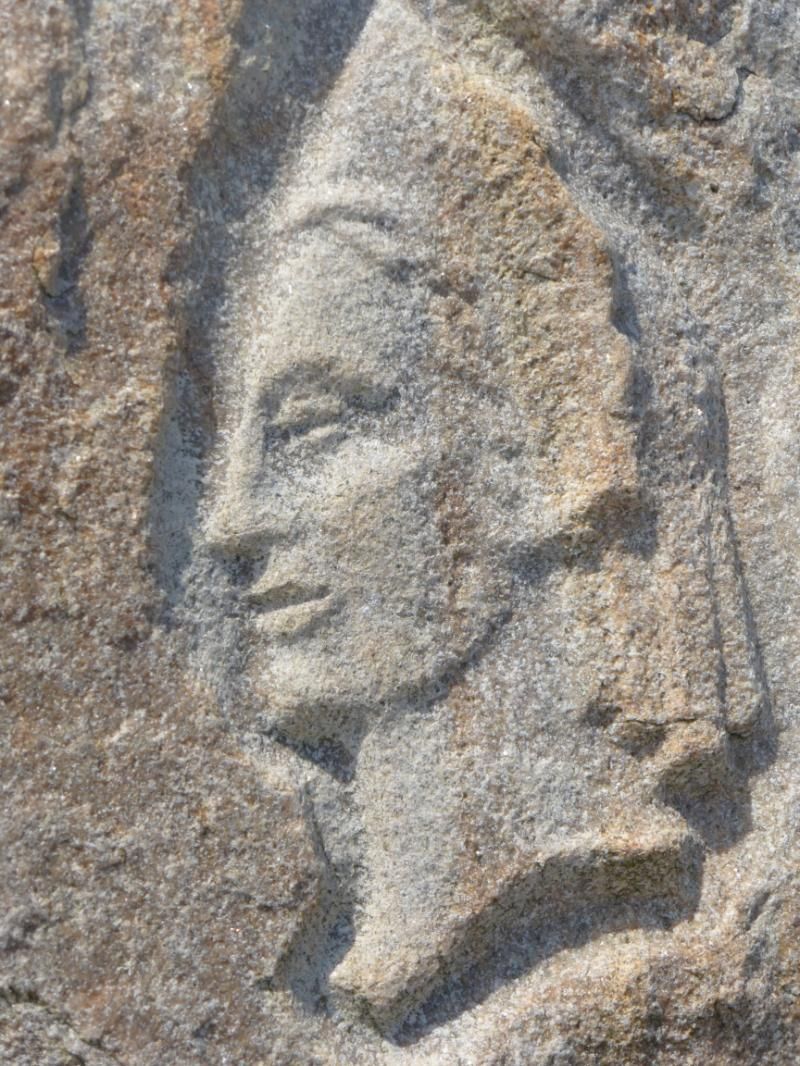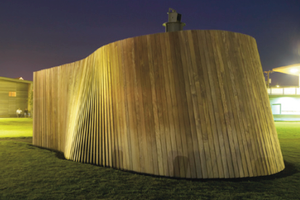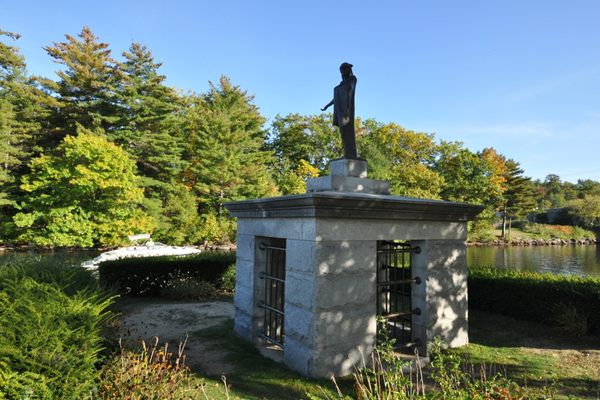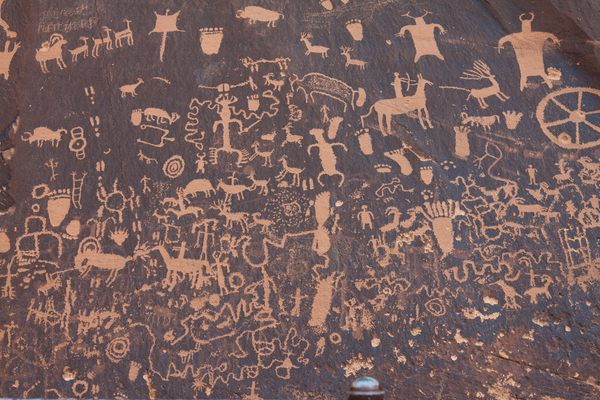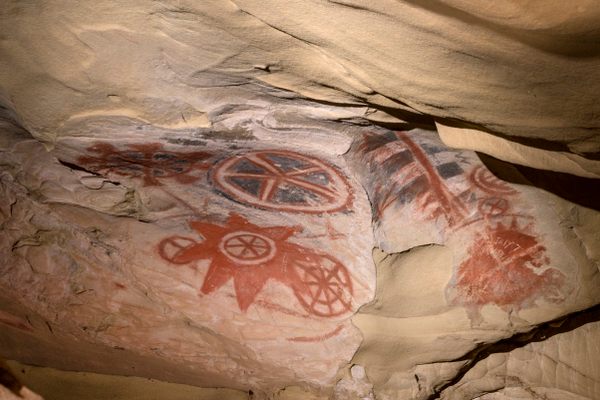About
Orient Point, the northernmost point of the North Fork of Long Island, New York, was once a landing place for Native Americans traveling between Connecticut and Long Island.
The Native Americans who lived there were called the Poquatuck, as was the nearby hamlet. In 1661, the first permanent English settlers named the area Oysterponds because of the abundance of nearby shellfish beds. The native peoples were wiped out not long after that. But a reminder of them can be found today, carved in stone.
In 1933, a local fisherman who had a great interest in Native American lore began making carvings on a pile of boulders on the Long Island Sound beach. Named ‘Bear Rock Studio,’ the carved boulders were made as a monument to vanquished Poquatuck.
Over a period of several years, the fisherman, Elliot Alvah Brooks, carved about 25 figures in the rocks. Most of the carvings are faces of Native Americans, but there are other images as well, including the outline of large polar bear.
The Oysterponds Historical Society has considered moving the rocks for preservation, but the logistics of moving them combined with legal issues over who actually owns the area have prevented that from happening. While unable to secure physical procurement of the boulders, the society does have more than 2000 photos of the carvings in their collection. The carvings have also been cataloged by the Smithsonian Institution.
Related Tags
Know Before You Go
The pile of boulders is public access, but be aware that the rest is private property. Be observant and respectful of property rights and the historical aspect of the area. All parking near public access beaches is controlled by parking permits; parking is difficult to come by, so you might have to walk quite a ways or have someone drop you off. As you enter the town of Orient on Main Road heading east, turn left on Youngs Rd. At the end of the road, you can walk directly to the waterline. (You must walk on the shoreline to remain off private property; it is a difficult walk in deep pebbles.) Turn right and walk approximately ¾ mile. The boulders will be on your right, at the spot where there is a bend in the shoreline.
Community Contributors
Added By
Published
August 16, 2016
